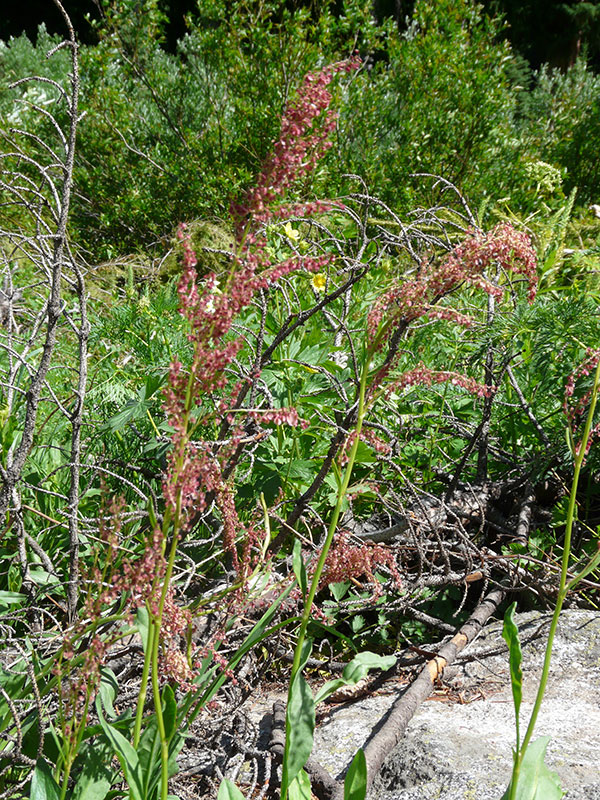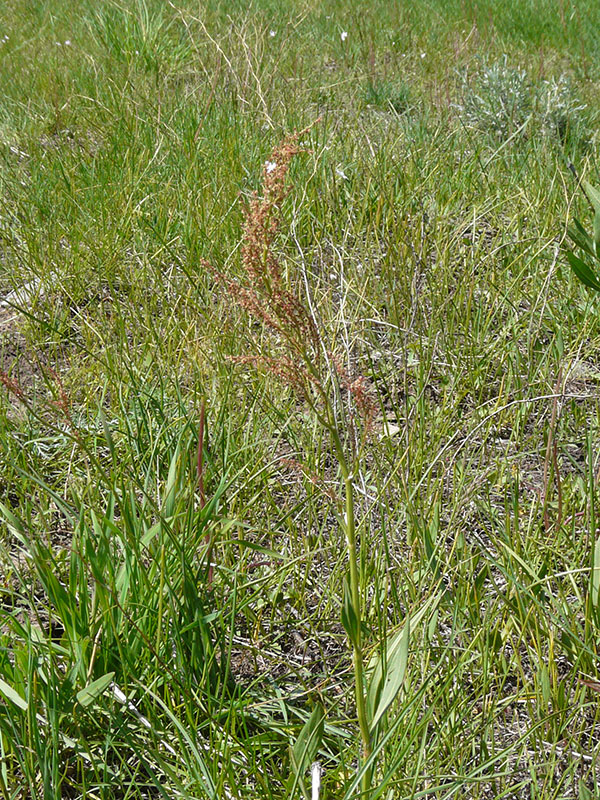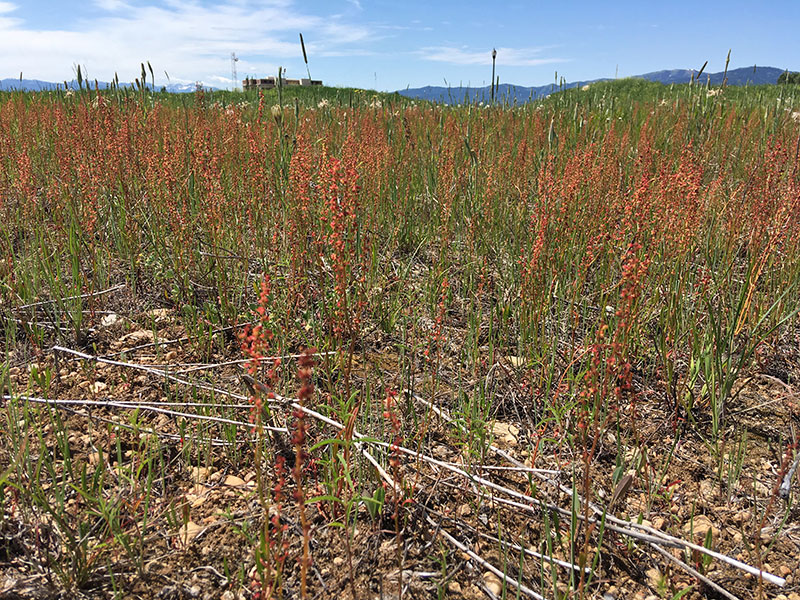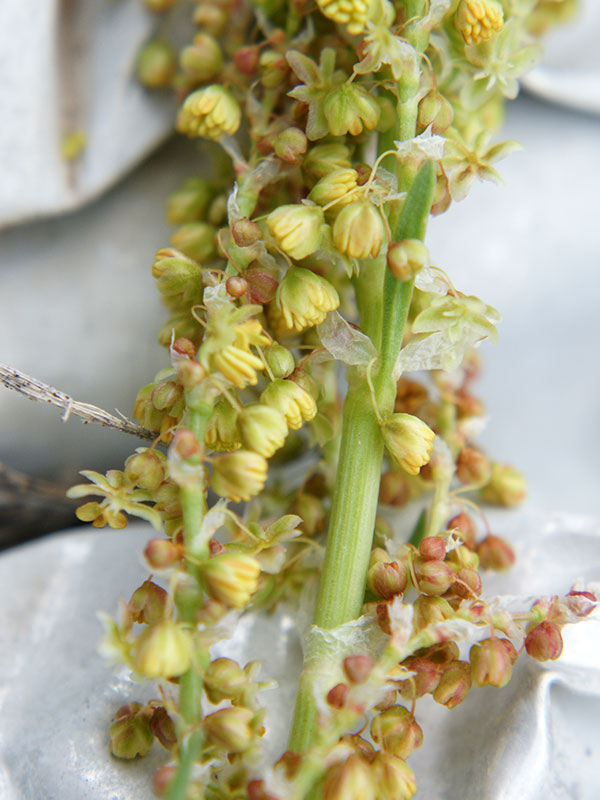Rumex acetosella / sheep sorrel
- long, vertical inflorescences… not compact or well “organized”
- female plants with red/maroon flowers; males with green/white flowers
- especially visible when seeds are ripe… red
- basal rosette of arrowhead shaped leaves
- disturbed areas, wastelands, poor sites
Also known as: red sorrel, sour weed, field sorrel
By far the most visible and identifying thing about sheep sorrel is the inflorescence. These are long vertical spike-like panicles, and to me, look rather disorganized. The inflorescences of other Rumex spp. are much more clumped and compact. Each inflorescence has many clusters of 10 to 25 flowers arranged in whorls (which makes them look a bit haphazard). If you look closely at an individual flower, it will be nodding – i.e. hanging down – and will have a short pedicel. You have to look very closely for this because the flowers themselves are teeny.
Flowers start off either greenish-white (male) or red/maroon (female), and turn bright rose-red later. You may note that different plants in the same area have different colored flowers. This reflects the fact that sheep sorrel is dioecious, i.e. male and female flowers are on different plants. Of course, only the female ones do this color changing trick. Eventually, they mature into reddish-brown seed heads.
Despite all I will say later about clonality, sheep sorrel does reproduce by seed. Because it is dioecious, it requires a pollen vector, and in this case, it is the wind. Once the seeds are mature, they are dispersed by wind and insects. The seed remain viable in the seed bank for decades, so the species regularly colonizes newly disturbed areas from buried seed.
The leaves of sheep sorrel are also characteristic and I apologize for not having photos to share. I guess the dogs were too eager to move on. The leaves are green and arrowhead-shaped with lobes at their bases. The stems are red-tinted and deeply ridged. Most of the leaves are in basal rosettes.
Sheep sorrel roots are slender and fibrous, but penetrate the soil as deep as 5 feet. But the roots closer to the surface are more interesting… creeping roots and rhizomes that can rapidly spread the plant. Shoots develop from buds that arise at irregular intervals on these roots and underground stems.
To finish off the picture of how this plant lives, its presence and abundance increase as soil quality decreases. Disturbance and poor soil favor it. Thus, it is most common in waste places and along roadsides, and especially in recently disturbed habitats. Housing developments that got started but really haven’t taken off, ones where “construction zones” are more common than actual houses, are good places to look for sheep sorrel.
So… it is perennial, non-native, adapted to poor soils and disturbance. Is it any wonder that is found in all states and is considered “noxious” in 23? At least it hasn’t reached that level in Idaho… yet.
| Color | |
|---|---|
| Family | |
| Blossom size | |
| Inflorescence size | |
| Inflorescence type | |
| When? | |
| Where? |






